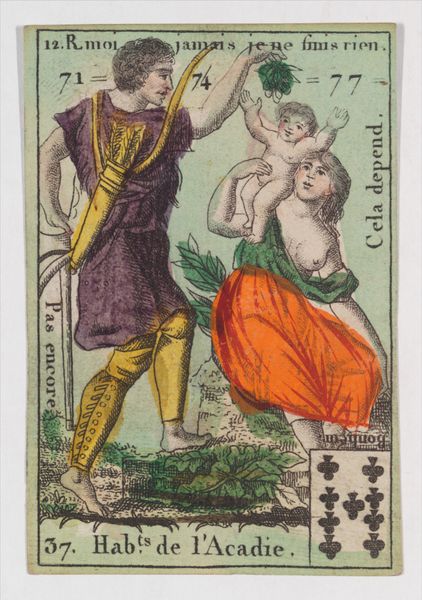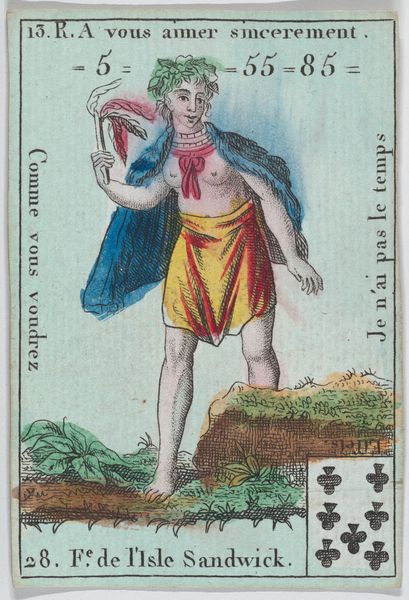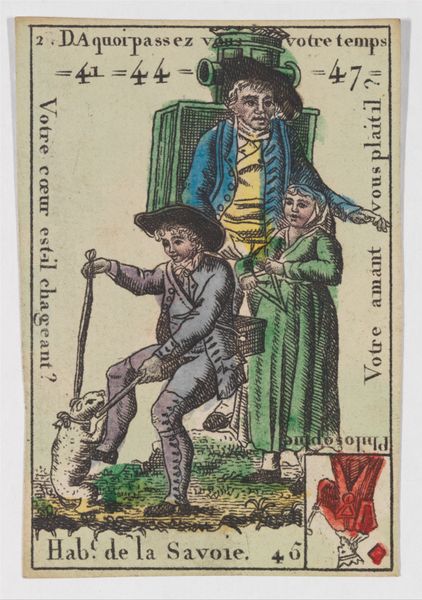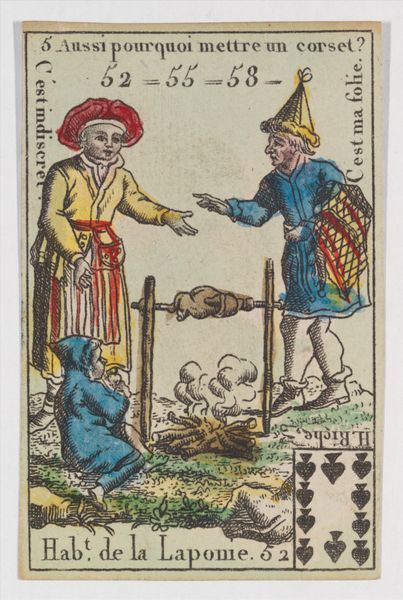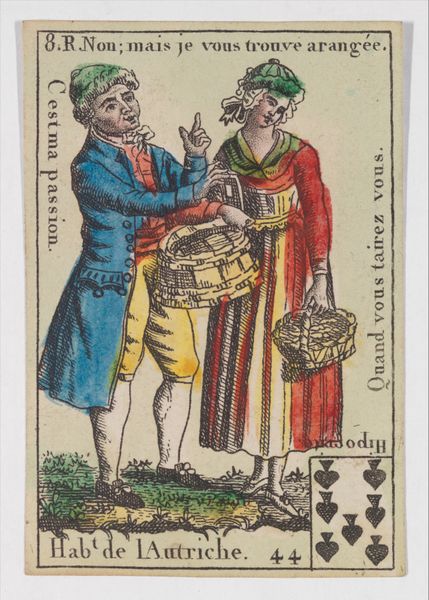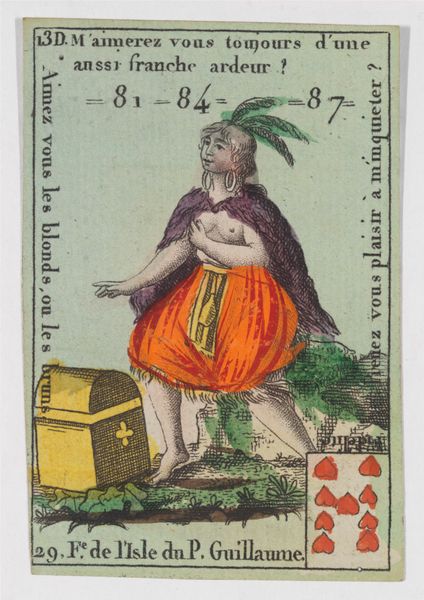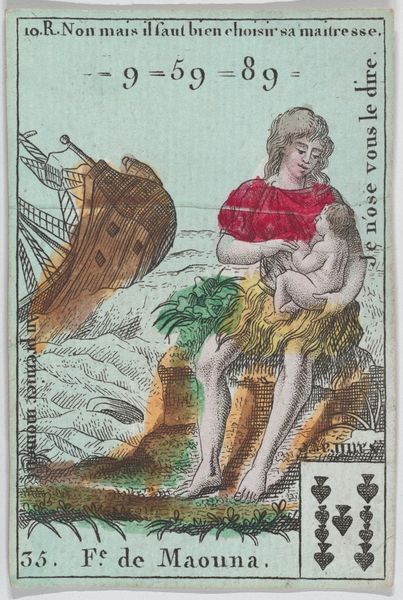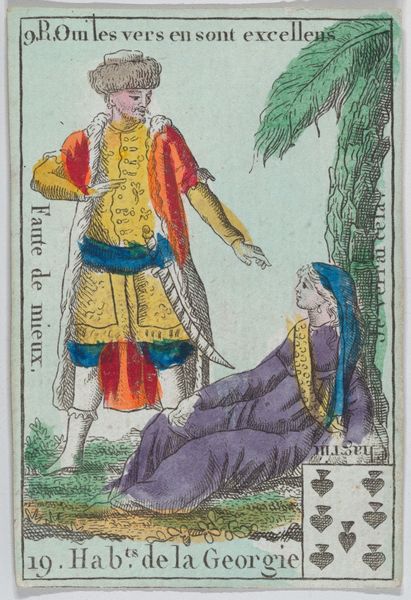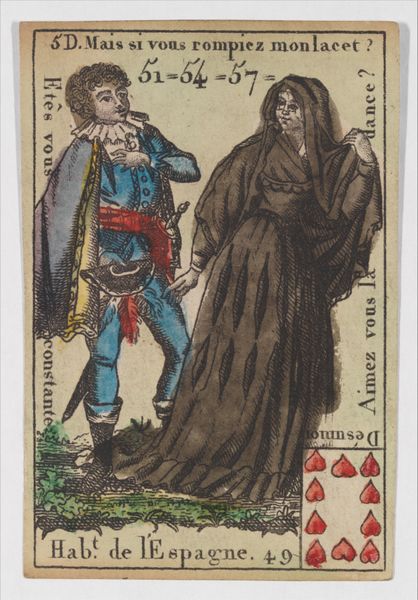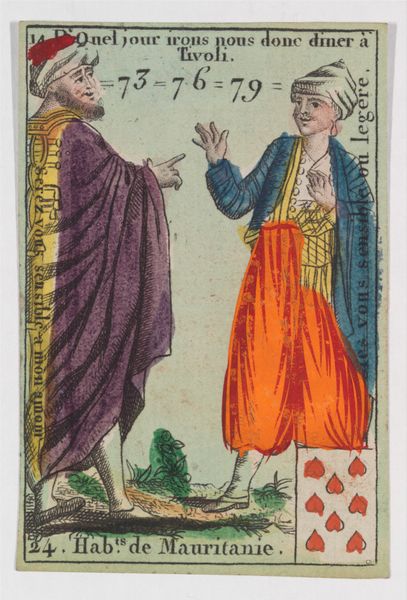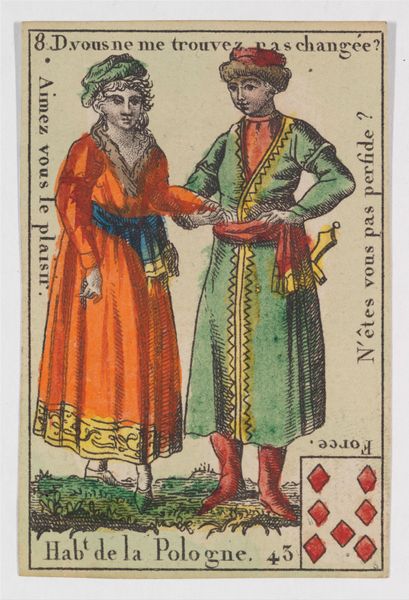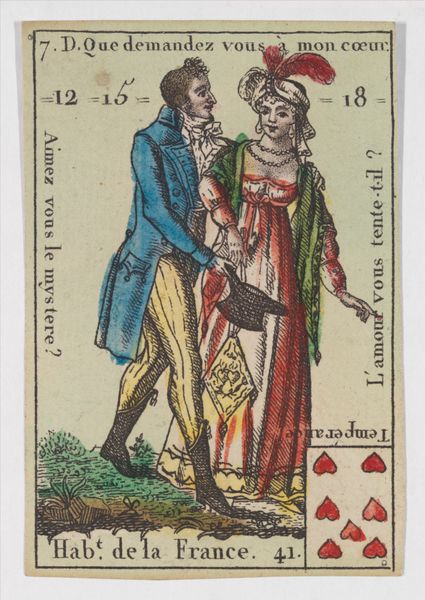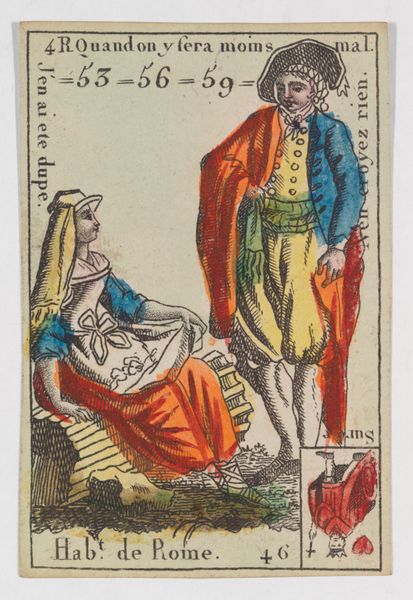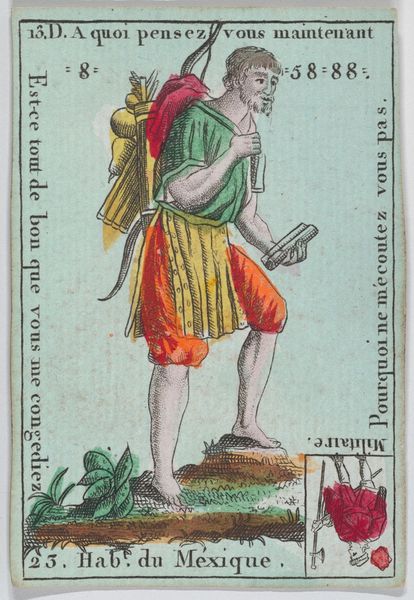
Hab.ts de la Zelande, from the playing cards (for quartets) "Costumes des Peuples Étrangers" 18th century
0:00
0:00
drawing, coloured-pencil, print, watercolor
#
portrait
#
drawing
#
coloured-pencil
# print
#
watercolor
#
coloured pencil
#
naive art
#
orientalism
#
men
#
costume
#
watercolour illustration
#
genre-painting
#
watercolor
Dimensions: 3 3/16 × 2 1/16 in. (8.1 × 5.3 cm)
Copyright: Public Domain
Curator: Look at this curious artifact! It's "Hab.ts de la Zelande, from the playing cards (for quartets) 'Costumes des Peuples Étrangers'", dating back to the 18th century. The Met has it cataloged as a print, with watercolor and coloured-pencil details. Editor: My initial thought? It's gloriously odd! There's something endearingly naive about the way these figures are rendered, as if the artist has only heard tell of these far-off peoples of Zealand. Curator: Exactly! It speaks volumes about how Europeans during that period perceived, or rather, constructed, these "foreign" cultures. The attention given to clothing seems more theatrical than ethnographic. Think about Orientalism and the "exotic" as power dynamics. Editor: It's like costumed role-playing for the elite. The woman, holding a child, draped in what I assume are supposed to be exotic fabrics— it feels... performative. What do you make of the color choices? Curator: They are…unexpected. That orange sash on the man practically vibrates. There's also this kind of flatness. Little attempt to portray accurate human anatomy, especially noticeable in their facial features, giving them this dream-like yet detached presence. Editor: Detached, yes! These cards weren't made for genuine understanding; they fueled fantasy. And while the details in the garments and accessories seem elaborate at first glance, you quickly notice that there is actually not a lot of actual factual, representative information presented, making these figures even more uncanny. The accompanying text further frames these subjects under the assumption of possession of their "faith". Curator: You can almost smell the perfumed drawing-rooms where these cards were dealt and re-dealt, reinforcing colonial biases with every shuffle. I feel the medium gives it the appearance of delicacy when it really perpetuates this violence onto another group. Editor: This makes me wonder about who originally owned them and how they used these images for leisure— to reinforce pre-existing attitudes towards faraway lands and justify imperialism? Curator: Precisely! It's a stark reminder that even something as seemingly harmless as a deck of cards can be a vehicle for power. The child nestled in the woman's arms makes it even more of a point to perpetuate those practices onto the new generation. Editor: Thank you for pointing out how these so called games reinforce the ideology of generations through leisure, power, and the exotification of identity. It seems imperative we question where such materials arise and their place within institutional collections.
Comments
No comments
Be the first to comment and join the conversation on the ultimate creative platform.
